9mm vs 40: The Concealed Carry Caliber Debate Explained
 The 9mm vs 40 Smith & Wesson (40 S&W) debate has been raging since the introduction of the 40 S&W in early 1990. Typically, the debate centers on which of the two pistol cartridges are superior for concealed carry.
The 9mm vs 40 Smith & Wesson (40 S&W) debate has been raging since the introduction of the 40 S&W in early 1990. Typically, the debate centers on which of the two pistol cartridges are superior for concealed carry.
The law enforcement community has flip-flopped on this issue over recent years as the FBI is retiring their 40 S&W Glock 22 sidearms and returning to the 9mm Luger as their standard issue ammo for their field agents.
Does this mean that you should forsake the 40 S&W and go all in on the 9mm? Is the 40 S&W even relevant in the discussion anymore about self-defense handgun calibers?
Before you hit GunBroker and dump all of your 40 S&W gear, let’s take an objective, non-biased look at the 40 Smith and Wesson and see how it stacks up against the most popular handgun round in the world, the 9mm Luger.
I hope you have a full package of silhouette targets and several boxes of FMJ ammo because we are going to need it as we take our shot at the 40 vs 9mm personal defense ammo debate!
40 Smith and Wesson (40 S&W): A Brief History of the 1986 Miami Shootout Solution
The 40 Smith & Wesson is a relatively new kid on the block when it comes to self-defense handgun cartridges. Introduced in 1990 in a joint effort between Smith and Wesson and Winchester, the 40 S&W was a direct result of the 1986 Miami Shootout.
The 1986 Miami Shootout is the most analyzed gunfight involving law enforcement in US history and is the genesis of the 40 S&W handgun round.
On April 11, 1986, the FBI was involved in a shootout with two serial bank robbers and murderers in Dade County, Florida. Although the FBI agents outnumbered the criminals 8 to 2, the FBI Special Agents were severely outgunned, resulting in 2 agents losing their lives and 5 suffering injuries after an extended gunfight.
It was determined that the FBI’s 9mm pistols and 38 Special revolvers were ineffective at stopping the criminals as they endured multiple hits and kept fighting.
In the aftermath of the shooting, the FBI performed extensive ballistic studies in which the terminal performance of various 9mm and 45 ACP defense loads in ballistic gel (a synthetic representation of human tissue) was evaluated. The search for a new FBI duty handgun round was on and in 1989 the FBI adopted the 10mm Auto.
The 10mm Auto was developed by the unsung American hero and well-known small arms expert, Lt. Colonel Jeff Cooper. Cooper developed the 10mm Auto to outperform the external ballistics of the 45 ACP and have improved terminal performance over the 9mm Parabellum.
From a ballistic standpoint, the 10mm Auto surpasses the mighty 357 Magnum in every category with a shorter cartridge overall length and greater magazine capacity than any 6-shot revolver.
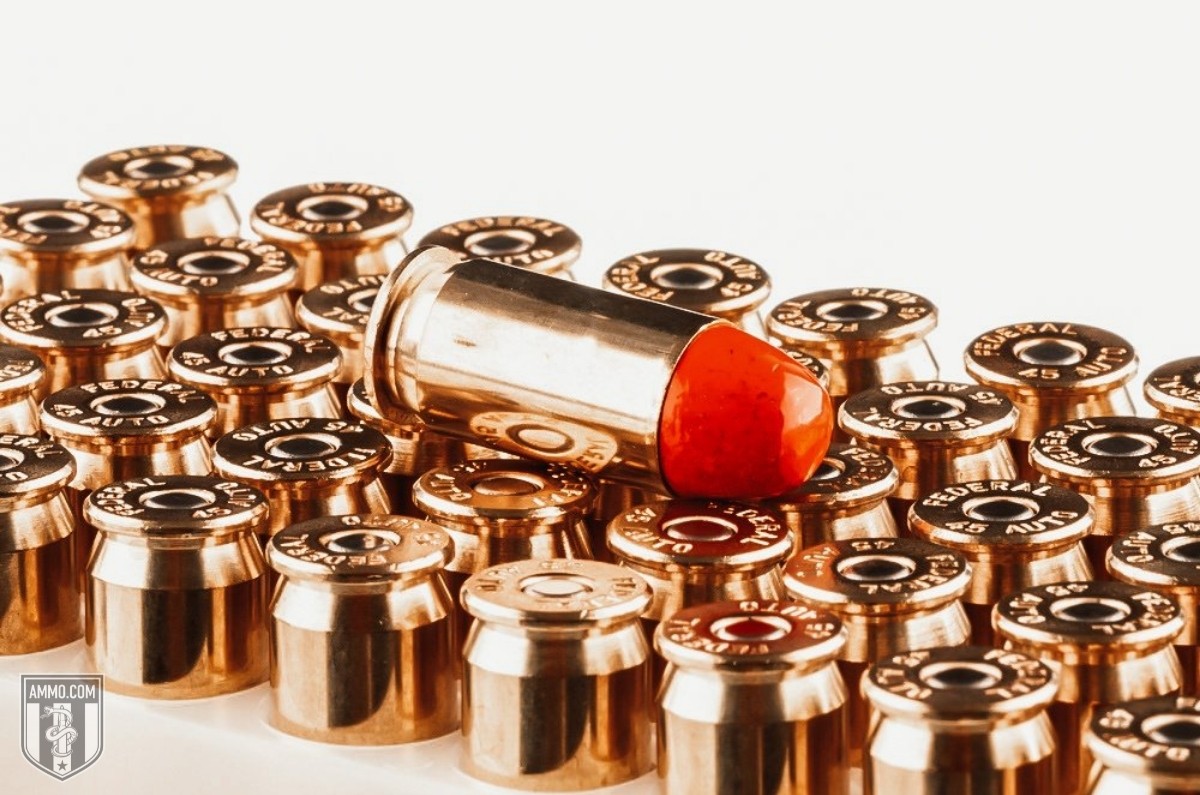
Although the 10mm Auto sounds great on paper, real-world results told a different story.
The 10mm had amazing results in ballistic gelatin testing and checked all the boxes for the FBI’s requirements for a new self-defense round. However, agents in the field were having issues handling the firearm as the 10mm has punishing recoil. Furthermore, 10mm Auto pistols are heavy, bulky, and thick, making them extremely difficult to conceal.
However, it wasn’t long until an FBI agent with a penchant for reloading came up with a solution. John Hall, the FBI Firearms Training agent-in-charge proposed a 10mm Auto cartridge that he had loaded with a reduced powder charge for consideration.
Hall’s 10mm reload fired a 180 gr 10mm hollow point at a muzzle velocity 1,000 fps (full power 10mm has a muzzle velocity of 1,400 fps). This handload met the FBI’s ballistic gel testing requirements with substantially reduced recoil.
The FBI subsequently contracted Smith and Wesson to modify their existing large frame semi-auto Model 4006 in 45 ACP to fire the reduced power 10mm Auto round.
During the development phase, Smith and Wesson, in conjunction with Winchester, determined that the reduced power of 10mm left a lot of dead air space inside the cartridge case as less gunpowder was required to meet the muzzle velocity requirements.
Testing indicated that this excess material could be removed, and the new round would fit into a medium 9mm pistol frame. How much material was removed? 3mm…That’s it.
This has led some shooters to refer to the 40 S&W as the “10mm Lite”, "10mm Short" or the “40 Short & Weak”, but trust me, there’s nothing weak about a 40 S&W.
The brand new 40 S&W round was unveiled on January 17, 1990, in conjunction with the new Smith and Wesson 4006 pistol.
Somewhat surprisingly, Smith & Wesson was not ready with production models of the new 4006 chambered in 40 S&W when they announced the new cartridge. This allowed a certain Austrian perfection-seeking firearms manufacturer, Glock, to beat Smith and Wesson to gun store display cases by a week with their new 40 S&W chambered pistols, the Glock 22 and Glock 23.
Standard 40 S&W full metal jacket (FMJ) ammo with a 165-grain bullet weight will leave the barrel with a muzzle velocity of 1130 fps and a muzzle energy of 468 foot-pounds of knockdown power. SAAMI specs for the 40 S&W indicate a maximum pressure of 35,000 psi.
After its introduction in 1990, the 40 S&W became extremely popular with police departments and law enforcement agencies across North America. Concealed carry permit holders also took note of the new pistol cartridge and enjoyed the increased stopping power (kinetic energy) the 40 S&W offered without sacrificing an absurd amount of magazine capacity (15 rounds vs 17 rounds for a Glock 22 magazine vs a Glock 17 magazine).
Although advancements in hollow point technology have seemingly rendered the 40 S&W less favored in the shooting community as of late, is the 40 still relevant?
Let’s look at its main competition, the 9mm Luger.
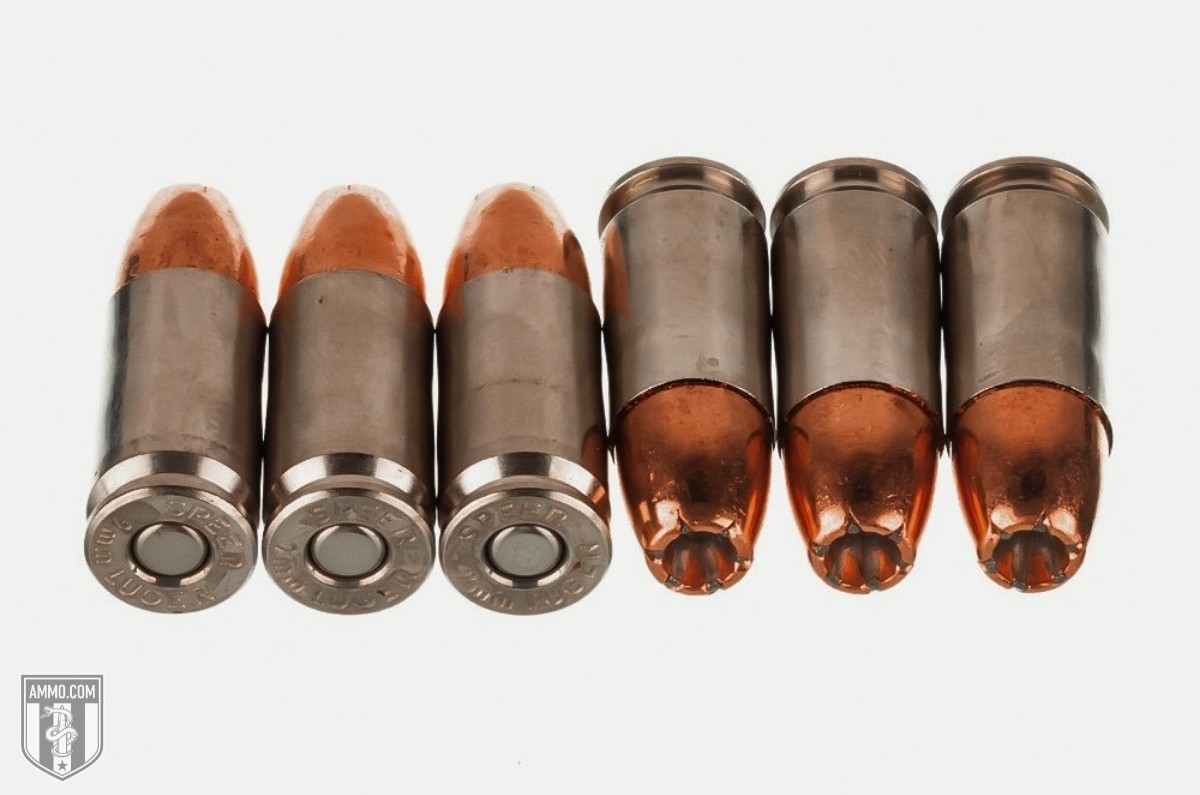
What is 9mm? The Austrian Concealed Carry Staple
The 9x19mm Parabellum was designed by the Austrian gunsmith Georg Luger in 1901. Luger derived the 9mm Parabellum from his previous design, the 7.65x21mm Parabellum.
In 1903 he presented the 9mm Parabellum to the US military for consideration at the Springfield Arsenal and was in competition with Browning and the 45 ACP. The 9mm was not adopted by the US military until much later and was instead picked up by the German Imperial Navy and Army in 1904 and 1908, respectively.
The 9x19mm Parabellum is also referred to as the 9x19mm NATO, 9mm Luger, or simply the 9mm. SAAMI specs list the maximum pressure for 9mm at 35,000 psi and standard 115 grain FMJ ammo will have an average muzzle velocity of 1180 fps and muzzle energy of 355 foot-pounds.
After World War I and through World War II, the 9mm Luger cartridge and its accompanying Luger P-08 handgun became one of the most popular handgun cartridges in Europe for both military and law enforcement. However, the United States was late to the party as it clung to the idiom, “Bigger Bullets are Better” and our beloved 45 ACP until the 1980s with the adoption of the Beretta M9 Service Pistol by the US Army.
The popularity of the 9mm Luger really exploded in the United States during the 80’s and 90’s with the introduction of extremely reliable semi-auto pistols, such as the Glock 17, the Sig Sauer P226, and more recently the Springfield XD and the Smith and Wesson M&P.
Fervor for the 9mm has only been bolstered by the U.S. military’s adoption of the Sig Sauer P320 as the new standard issue sidearm for military personnel.
The 9mm has become synonymous with law enforcement and home defense for its high magazine capacity, stopping power using jacketed hollow point ammo (JHP), and low overall cost per round.
9mm pistols are extremely easy to come by and are relatively inexpensive as all major firearms manufactures carry some offering for the 9mm cartridge: Glock, Smith and Wesson, Sig Sauer, Kimber, Springfield, Remington, Ruger, and Taurus, just to name a few!
It has truly become the everyday carry (EDC) handgun of choice if you don’t want to carry something more sizable and snappier like a 357 Magnum. And with advancements in hollow point technology, the 9mm has solidified itself as the self-defense ammo of choice for the military, law enforcement, and the civilian concealed carry permit holder.
But is the 9mm Parabellum better than the 40 S&W? Let’s compare these two handgun cartridges and find out.
40 vs 9mm: The Difference Between 40 and 9mm
When comparing two handgun calibers such as the 9mm and 40 S&W, it is incredibly difficult to declare a “winner," as each cartridge has its specific advantages and disadvantages.
Shooters in each camp have dug their heels into their positions, and it’s unlikely any amount of ballistic gel testing or empirical data will sway their opinion as to which of these two pistol calibers is superior.
However, what we CAN do is objectively look at both pistol cartridges without bias so that you can make an informed decision on your next CCW pistol.
Let’s start with the top three points of contention when it comes to discussion 40 vs 9mm: stopping power, magazine capacity, and recoil.
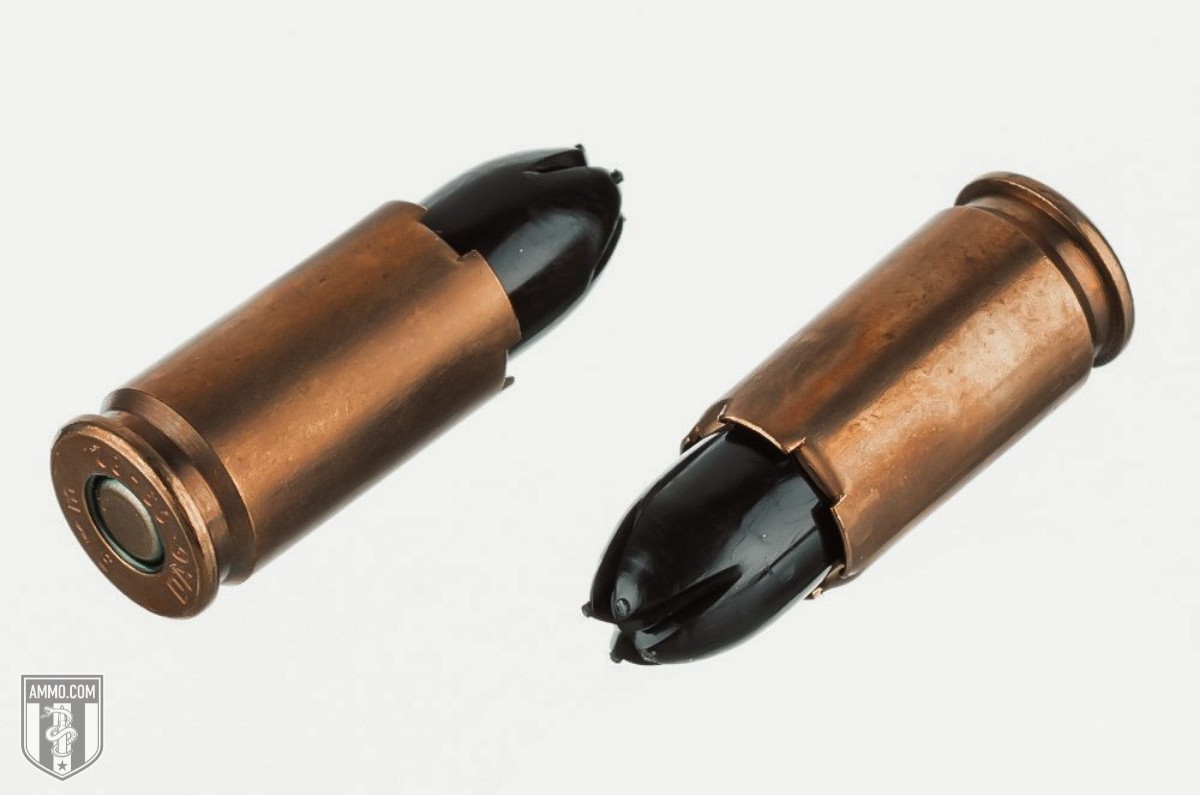
9mm vs 40: Stopping Power
Stopping power, or knockdown power as it is sometimes referred to, is one of those mystical terms that shooters like to throw around to justify their position on one caliber or another. There is no column on the ballistics charts for stopping power, and in truth, it is a combination of several factors.
Although stopping power cannot be quantified, the best way to think of it is as the rate at which the bad guy reaches a state of incapacitation. Once the bad guy is unwilling or unable to continue, you’ve won the gunfight.
The way that incapacitation is achieved is through blood loss, oxygen deprivation to the brain, or damage to the central nervous system (CNS). All three of the conditions require adequate shot placement to be effective.
A 40 S&W to the foot is a lot less lethal than a 9mm to center mass.
However, with all things being equal, the 40 S&W is going to hit harder and cause a larger permanent wound cavity as it is a wider, heavier bullet compared to a 9mm.
Now, all of the 9mm diehards are going to expound on the fact that advancements in jacketed hollow point (JHP) technology have brought the 9mm round onto the same level as the 40 S&W in terms of expansion. I’m not sure if I’m willing to go that far.
There is no doubt that self-defense 9mm ammo is considerably more effective and reliable in terms of expansion than what the FBI had in 1986. But that doesn’t mean that the 9mm will expand to the same diameter as a 40 S&W.
Generally speaking, a quality JHP self-defense round will expand to approximately double its original diameter.
It cannot be denied that a 40 S&W will cause a larger permanent wound cavity and have better terminal performance than a 9mm, but this doesn’t mean that the .40 is the clear-cut winner in terms of stopping power. The biggest issue that many detractors of the 40 S&W bring up is the amount of recoil the cartridge has, which will directly affect shot placement.
On that note, let’s discuss recoil!
9mm vs 40: Recoil
Many shooters, typically the XY chromosome variety, will scoff at discussions of recoil. “Tough it out and take the pain, it’s worth it to shoot a bigger caliber” is the go-to argument for some.
And there’s no denying that recoil can be mitigated by proper stance, grip, firearm weight, and training.
However, for some shooters, the 40 S&W is difficult to handle due to its snappy recoil.
The 40 S&W round has a higher breach pressure than both the 9mm and 45 ACP as it is essentially a cutdown 10 mm. The higher breach pressure causes increased muzzle rise during the recoil cycle, which not only makes the 40 S&W uncomfortable for some shooters, it also makes for slower follow-up shots as the shooter must take more time to return the sights to the target.
When compared to the 9mm, it’s clear that 9mm loads have about 25% less recoil than the 40 S&W. For an experienced shooter, this recoil will not be too difficult to handle. However, for a new shooter or one with smaller hands, it can be incredibly difficult to handle the recoil of a 40 S&W.
In a personal defense situation, the key to stopping the bad guy is to accurately deliver as many rounds on target as possible. This increases your chances of hitting a major organ and causing incapacitation of the bad guy.
Recoil will play a large part in this as it will dictate the speed of your follow-up shots, and no amount of “toughing it out” will be able to compensate for this.
The 40 S&W fires a heavier bullet weight with an increased breech pressure compared to the 9mm, therefore 9mm ammo will have less recoil than the .40. Many shooters find that they are more accurate with a 9mm (and law enforcement data supports this) as they can focus on the fundamentals of shooting as opposed to worrying about recoil.
This is one of the main reasons many police departments and the FBI are returning to the 9mm for their standard duty sidearms.
One final note on recoil is that it is also firearm dependent. A heavier pistol like a Sig Sauer P226 or a CZ-75B will impart less recoil onto the shooter than a lighter firearm like a Glock will.
As many CCW permit holders will carry a compact or a sub-compact firearm, the amount of recoil that the 40 S&W will bestow upon the wrists of a shooter utilizing a subcompact like a M&P 40c or a Glock 27 is substantial.
And if a firearm is uncomfortable to shoot, it’s like that the shooter will have a desire to practice with it less. As shot placement is tantamount to winning a gunfight, you will be better served by carrying a handgun that you are comfortable shooting and have practiced with extensively as opposed to carrying a bigger caliber that’s uncomfortable to shoot and you practice with it infrequently.
No matter how you slice it, a shooter utilizing a 9mm round will experience less recoil, faster follow-up shots, and generally improved accuracy compared to 40 S&W.
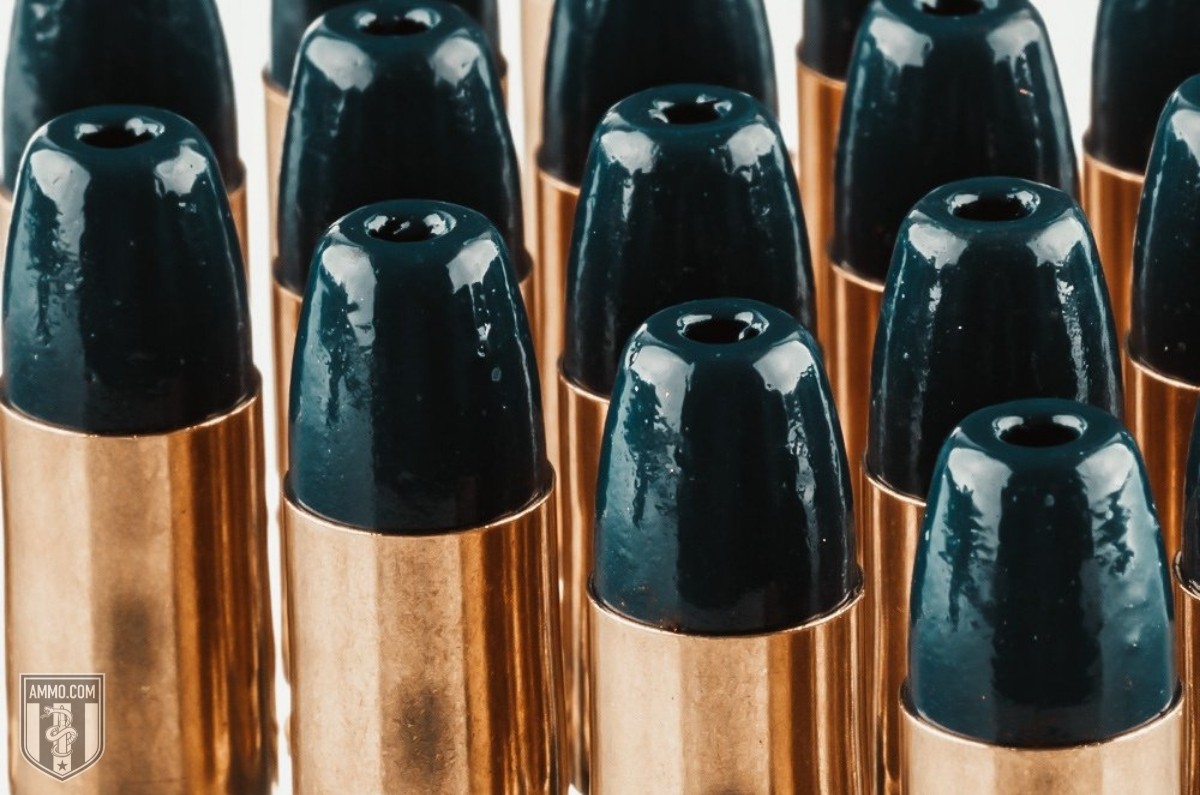
9mm vs 40: Magazine Capacity
Magazine capacity for both the 9mm and the 40 S&W is very good. One draw to the 40 S&W is that you get to fire a heavier bullet weight and you only have to sacrifice a few rounds from the magazine.
Comparing the Glock 17 to the Glock 22, the difference in magazine capacity is only 2 rounds. That’s pretty good.
However, 2 rounds are 2 rounds. That could mean the difference between engaging another target before having to reload.
Though the difference is small, the 9mm does allow for higher magazine capacity which means you can carry more ammo on your person for the same amount of belt real estate.
9mm vs 40: Accuracy
Some new shooters have asked me in the past, “Is the 40 more accurate than the 9mm?”
However, that’s not really the right question as a concealed carry permit holder.
The right question is, “What are YOU more accurate with? 9mm or 40 S&W?”
Accuracy is primarily dependent on the shooter, not the cartridge or the firearm. If all things were equal, shooters would experience almost identical accuracy between these two handgun cartridges.
However, it is extremely rare for all things to be equal, and many shooters discover that they are more accurate with a 9mm. This is primarily due to the heavier recoil that the 40 S&W has as we discussed in the previous section.
9mm vs 40: Home Defense and Concealed Carry
In terms of home defense, my choice would be the 40 S&W. Engagements inside the home will be at very close distances, and in this environment, you want the heaviest, most powerful round you can handle while still maintaining shot placement.
The 180-grain weight bullet provides excellent penetration and kinetic energy transfer into the bad guy without excessive overpenetration that could lead to hitting an innocent bystander or your neighbor next door.
For concealed carry, the 9mm seems like the better option for several reasons.
First, a compact or sub-compact 9mm handgun will have less recoil than a 40 S&W of the same size. Generally, this will result in better accuracy, and this is critical when you are out in public. The potential to hit an innocent bystander is exponentially higher in a public place and this is the absolute last thing you want to do if you should ever have to draw your handgun.
Every bullet you fire has a lawyer attached to it, so you want to make darn sure that you hit what you shoot at should you have to defend your life outside of the home.
The second reason the 9mm is preferred for CCW is you can carry more 9mm ammunition on your person for the same space. Generally, 9mm magazines have a higher capacity than 40 S&W, so you can carry a few extra rounds for the same weight…and more rounds is always better!
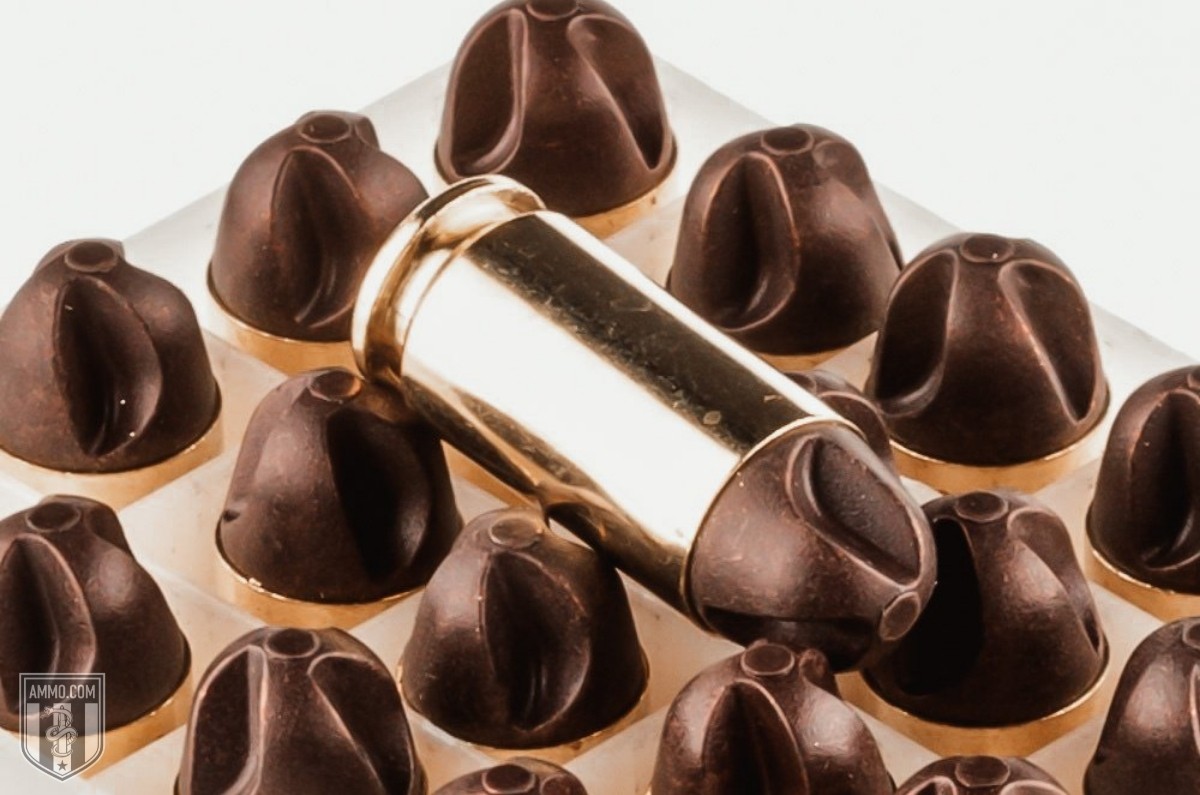
9mm vs 40: Ammo Price and Availability
At the time of writing, both 9mm and 40 S&W ammo is plentiful with multiple bullet weight options available.
The vast majority of 9mm Luger comes in 115 gr, 124 gr, and 147 gr varieties, while 40 S&W is mostly found in 165 gr and 180 gr bullet weights.
Generally, premium JHP ammo is about $1 per round for both 9mm and 40 S&W.
For FMJ practice ammo, you should expect to pay about $0.50 per round for 9mm and $0.60 per round for 40 S&W. This isn’t a huge difference, but 9mm FMJ ammo is typically cheaper as there are more options available since it’s a caliber utilized by the military and 40 S&W is not.
Buying in bulk is always smart, make sure to check out our stock of 9mm bulk ammo and bulk 40 S&W ammo.
9mm vs 40: Handgun Price and Availability
Variety, my friends, is the spice of life, and if you like handgun variety then the 9mm and 40 S&W are two handgun calibers that are very spicy.
Every major handgun manufacturer has an offering for both handgun cartridges as they are extremely popular.
Glock, Smith and Wesson, Springfield, Kimber, Sig Sauer, and CZ all have multiple semi-auto handgun offerings for both 9mm and 40 S&W.
As far as price is concerned, for new handguns, you should expect to pay about the same price for either caliber. This is because they both use the same frame size and will have virtually identical external dimensions (meaning there is no added material used to manufacture a 40 S&W handgun).
However, the used market is a little different when comparing 9mm vs 40, especially when it comes to Glock.
Many police departments use Glock as their duty pistol manufacturer. With the decline in popularity of the 40 S&W, many departments are switching back to the 9mm. This means there is an excess of police trade-in Glock 22’s on the market.
It’s not uncommon to find a used or police trade-in Glock 22 on GunBroker or at a gun show for under $350. Good luck finding a Glock 17 for anything south of $450 unless it’s a Gen 3 that needs to have the slide refinished.
9mm Glocks are in high demand circa Q3 2021 and are retaining their value on the secondary market much better than 40 S&W Glocks. So, if you’re in the market for a cost-friendly, extremely reliable sidearm you might want to pick up a Glock 22 at your local gun show, gun store, or pawn shop.
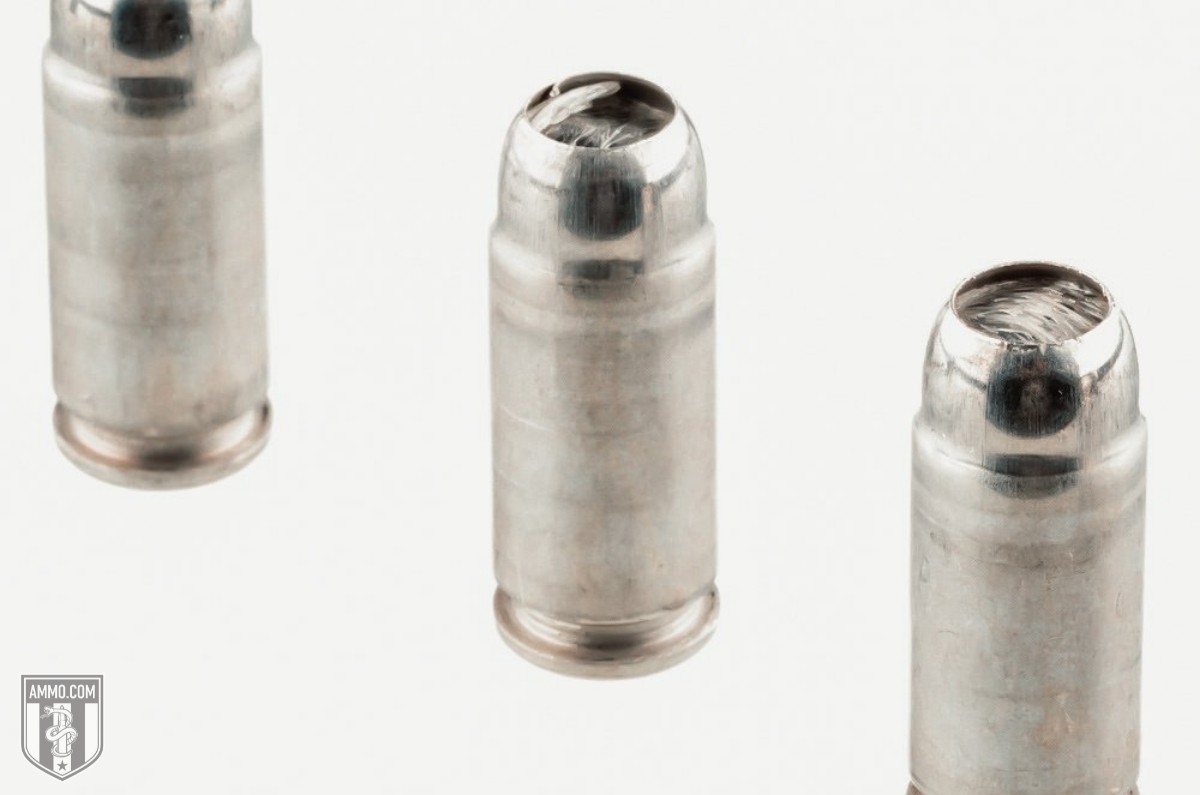
9mm vs 40: Reloading
Reloading 9mm is perhaps the most rewarding part of choosing the 9mm round as your go-to cartridge. Brass is plentiful, you can pick from a myriad of powder options, and there are all different bullet profiles and weights to customize your perfect 9mm loads.
The same can be said for the 40 S&W as well, however, there’s a bit of an asterisk connected to that statement when reloading .40 caliber. Let me explain.
As we mentioned earlier in the article, the 40 S&W has rather high breech pressure due to it being a chopped down 10mm Auto. Furthermore, the pressure curve during the firing sequence for 40 S&W is extremely sharp, which causes the “snappy” recoil many shooters experience when shooting their .40 cal handguns.
With such a sharp pressure curve, the acceptable powder charge range that falls within SAAMI spec is extremely narrow for 40 S&W. Often the difference between the minimum and maximum charge is less than a full grain, for some powders it is as low as half a grain.
This makes it incredibly easy to accidentally reload a 40 S&W round that is overcharged (over SAMMI pressure specs). This is the primary reason for the infamous Glock “kaBoom!” as it is referred to on the Internet.
A Glock “kaBoom!” is when a shooter experiences a ruptured case when shooting (typically) a 40 S&W in an older Glock pistol. When a case ruptures, highly pressurized gasses will escape the chamber and can damage the firearm and/or the shooter.
In the past, many shooters who experienced this will blame the Glock chamber design as the chamber does not fully support (encapsulate) the handgun cartridge during firing. For lower pressure rounds like 9mm and 45 ACP, this is not an issue as they are less likely to cause a critical level of pressure in the chamber.
However, 40 S&W is inherently a higher-pressure round and when you put an overly hot reload or overcharged factory load into the chamber, it has the potential to cause a catastrophic event.
This condition can is exacerbated by a phenomenon referred to as the “Glock Bulge”. During the firing procedure, a brass cartridge case will expand and form a seal around the chamber of the firearm. As the Glock chamber is not supported near the case head, the brass can expand into the void area around the feed ramp and the brass will have a visible bulge after firing.
As the bulge is too close to the shell holder, a standard resizing die cannot reach the bulge to iron it out. The bulge represents a weak spot in the brass and specialized tools are required to remove it.
If you have bulged brass, your best options are the Redding G-RX kit or the Lee Precision Bulge Buster. Both products will remove the bulge caused by an unsupported chamber and help reduce (not eliminate) the potential for a ruptured case.
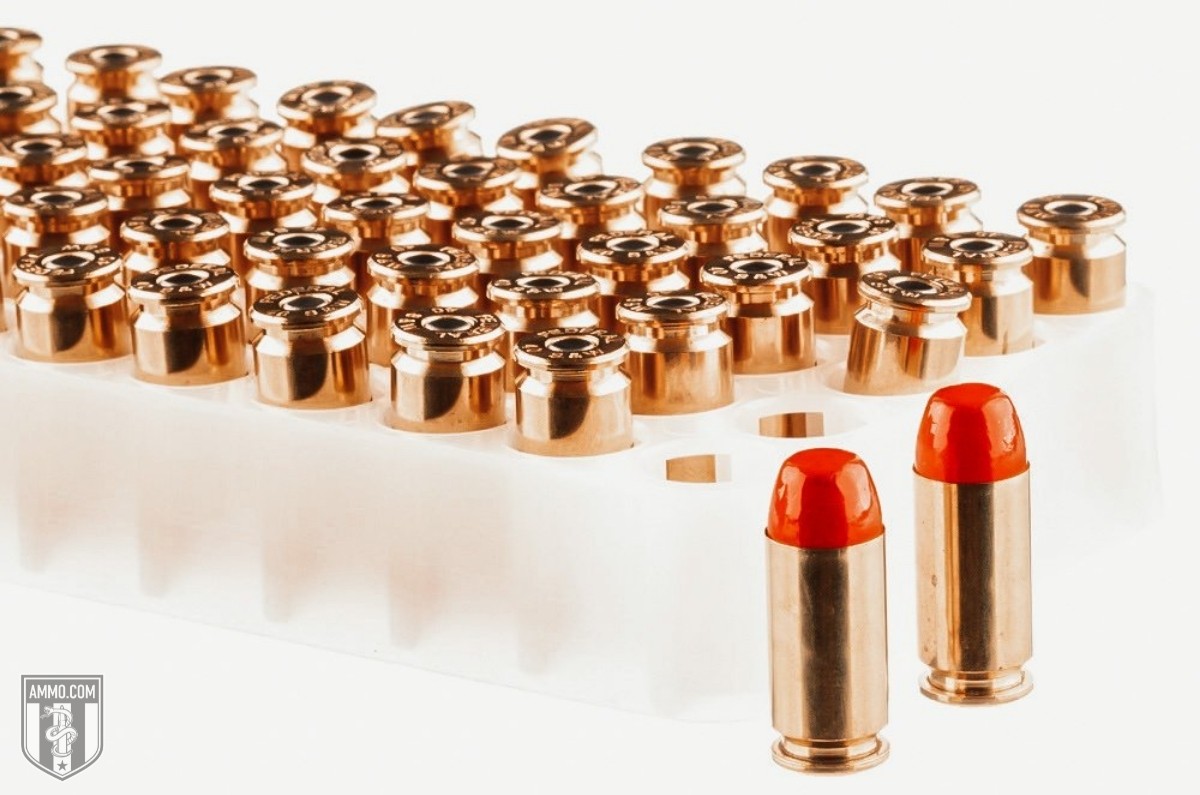
Reloading the 40 S&W can be a very rewarding and cost-saving hobby to feed your need for cheaper range time. However, be very careful not to overcharge your 40 S&W reloads and it is my recommendation that you tailor your 40 S&W loadings on the lower end of the powder charge range. This allows for some leeway in case a little extra powder is accidentally loaded into your brass casings.
Always check your powder charges incrementally during a loading session if you are using an automatic charging device. This will ensure that you are throwing a consistent charge for your reloads and lowers the potential for an overcharged case and a “kaBoom!”.
9mm vs 40 Ballistics
Our team here at Ammo.com has combed manufacturers data to provide you the most in-depth and comprehensive ballistics tables to compare the 9mm vs 40 S&W. These tables will allow you to see how your favorite bullet weight compares to others in terms of muzzle velocity, muzzle energy, and trajectory.
9mm Ballistics: Chart of Average 9mm Luger Ballistics
Note: This information comes from the manufacturer and is for informational purposes only. The actual ballistics obtained with your firearm can vary considerably from the advertised ballistics. Also, ballistics can vary from lot to lot with the same brand and type load.
| 9mm Bullet WEIGHT | Muzzle VELOCITY (fps) | Muzzle ENERGY (ft. lbs.) | Mid-Range TRAJECTORY (in.) | Barrel Length (in.) | |||||
|---|---|---|---|---|---|---|---|---|---|
| Muzzle | 50 yds. | 100 yds. | Muzzle | 50 yds. | 100 yds. | 50 yds. | 100 yds. | ||
| 80 Grain | 1445 | n/a | n/a | n/a | 385 | n/a | n/a | n/a | n/a |
| 88 Grain | 1500 |
1190 | 1010 | 440 | 275 | 200 | 0.6 | 3.1 | 4" |
| 90 Grain | 1360 | 1112 | 978 | 370 | 247 | 191 | n/a | n/a | 4" |
| 92 Grain | 1325 | 1117 | 991 | 359 | 255 | 201 | -3.2 | n/a | 4" |
| 95 Grain | 1300 | 1140 | 1010 | 350 | 275 | 215 | 0.8 | 3.4 | 4" |
| 100 Grain | 1180 | 1080 | n/a | 305 | 255 | n/a | 0.9 | n/a | 4" |
| 105 Grain "Guard Dog" | 1230 | 1070 | 970 | 355 | 265 | 220 | n/a | n/a | 4" |
| 115 Grain | 1155 | 1045 | 970 | 340 | 280 | 240 | 0.9 | 3.9 | 4" |
| 123 Grain | 1110 | 1030 | 970 | 340 | 290 | 260 | 1 | 4 | 4" |
| 124 Grain | 1150 | 1040 | 965 | 364 | 298 | 256 | -4.5 | n/a | 4" |
| 125 Grain | 1110 | 1030 | 970 | 340 | 290 | 260 | 1 | 4 | 4" |
| 135 Grain | 1010 | 960 | 918 | 306 | 276 | 253 | n/a | n/a | 4" |
| 140 Grain | 935 | 890 | 850 | 270 | 245 | 225 | 1.3 | 5.5 | 4" |
| 147 Grain | 990 | 940 | 900 | 320 | 290 | 265 | 1.1 | 4.9 | 4" |
| 90 Grain +P | 1475 | n/a | n/a | 437 | n/a | n/a | n/a | n/a | 4" |
| 115 Grain +P | 1250 | 1113 | 1019 | 399 | 316 | 265 | 0.8 | 3.5 | 4" |
| 124 Grain +P | 1180 | 1089 | 1021 | 384 | 327 | 287 | 0.8 | 3.8 | 4" |
40 Cal (S&W) Ballistics: Chart of Average 40 Cal (S&W) Ballistics
Note: This information comes from the manufacturer and is for informational purposes only. The actual ballistics obtained with your firearm can vary considerably from the advertised ballistics. Also, ballistics can vary from lot to lot with the same brand and type load.
| 40 Cal (S&W) Bullet WEIGHT | Muzzle VELOCITY (fps) | Muzzle ENERGY (ft. lbs.) | Mid-Range TRAJECTORY (in.) | Barrel Length (in.) | |||||
|---|---|---|---|---|---|---|---|---|---|
| Muzzle | 50 yds. | 100 yds. | Muzzle | 50 yds. | 100 yds. | 50 yds. | 100 yds. | ||
| 120 Grain | 1150 | n/a | n/a | 352 | n/a | n/a | n/a | n/a | n/a |
| 125 Grain | 1265 | 1102 | 998 | 444 | 337 | 276 | -3 | n/a | 4" |
| 135 Grain | 1140 | 1070 | n/a | 390 | 345 | n/a | 0.9 | n/a | 4" |
| 135 Grain Guard Dog | 1200 | 1040 | 940 | 430 | 325 | 265 | n/a | n/a | 4" |
| 155 Grain | 1140 | 1026 | 958 | 447 | 362 | 309 | 0.9 | 4.1 | 4" |
| 155 Grain JHP | 1175 | n/a | n/a | 475 | n/a | n/a | n/a | n/a | n/a |
| 165 Grain FMJ | 1050 | n/a | n/a | 404 | n/a | n/a | n/a | n/a | n/a |
| 165 Grain JHP | 1100 | n/a | n/a | 443 | n/a | n/a | n/a | n/a | n/a |
| 165 Grain | 1150 | n/a | n/a | 485 | n/a | n/a | n/a | n/a | 4" |
| 175 Grain | 1010 | 948 | 899 | 396 | 350 | 314 | n/a | n/a | 4" |
| 180 Grain FMJ | 985 | 936 | 893 | 388 | 350 | 319 | 1.4 | 5 | 4" |
| 180 Grain | 1000 | 943 | 896 | 400 | 355 | 321 | 4.52 | n/a | 4" |
| 180 Grain | 1015 | 960 | 914 | 412 | 368 | 334 | 1.3 | 4.5 | 4" |
| 155 Grain +P | 1300 | n/a | n/a | 582 | n/a | n/a | n/a | n/a | n/a |
| 180 Grain +P | 1100 | n/a | n/a | 484 | n/a | n/a | n/a | n/a | n/a |
40 vs 9mm: Final Thoughts
The 40 S&W and 9mm are two extremely potent self-defense pistol calibers that will satisfy the needs of almost any concealed carry permit holder.
The 40 S&W offers increased stopping power as it fires a larger, heavier bullet with only minimal loss to magazine capacity. However, the 40 S&W is a high-pressure round and some shooters may find the snappy recoil to be uncomfortable and/or uncontrollable which leads to slower follow-up shots.
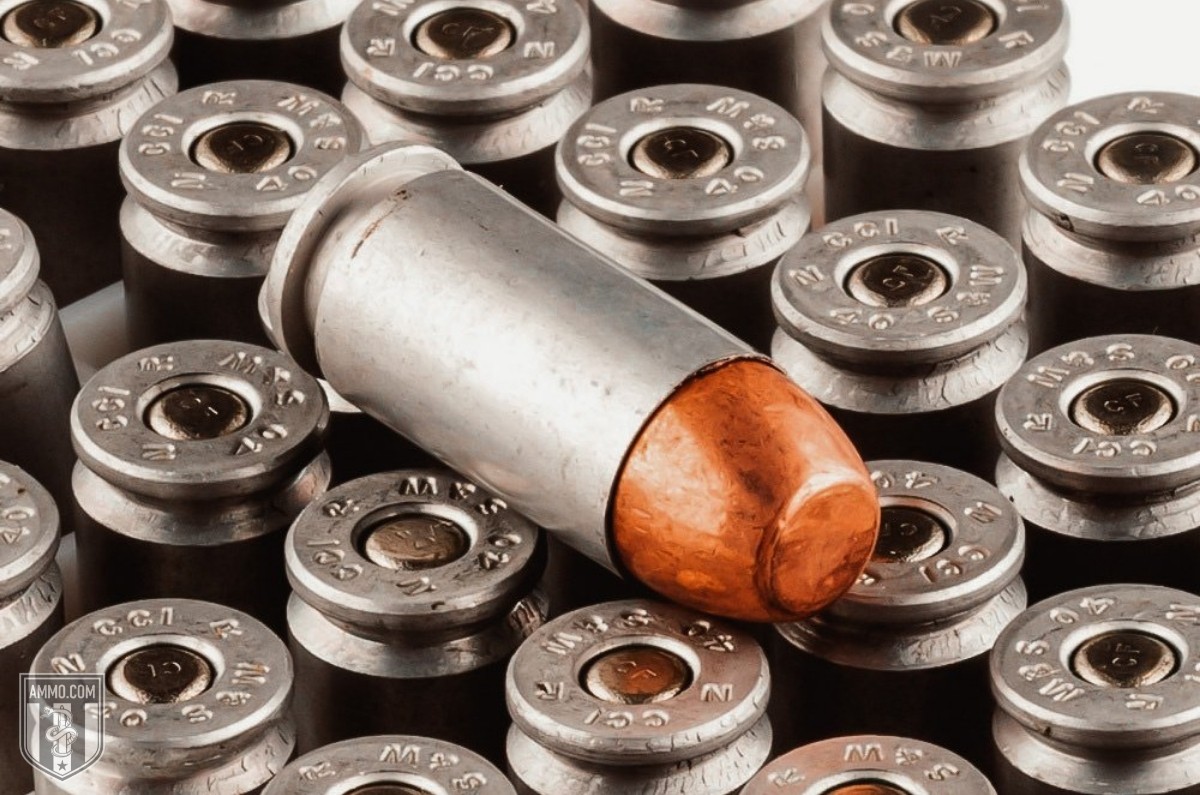
In contrast, the 9mm Luger has come a long way since the 1986 Miami Shootout, and advancements in hollow point technology have elevated the 9mm’s terminal performance to be on par with the 40 S&W and the 45 ACP. The 9mm enjoys added magazine capacity over the 40 S&W as well as a recoil impulse that is much more controllable in the hands of new or inexperienced shooters.
Many law enforcement agencies have switched their standard duty pistols back to 9mm, indicating that the increased accuracy and faster split times many officers experience while shooting 9mm is more important in a gunfight than firing a bigger bullet.
Although the 40 S&W has fallen out of favor over the last 6+ years, it is still an extremely potent self-defense round and should not be underestimated or marginalized.
But which is best for you?
My recommendation is to head to your local gun range and rent a handgun in both. Put a few boxes of FMJ ammo through each and figure out which one you shoot better.
Shot placement is always going to be the trump card when it comes to winning any personal defense situation, so you should carry what you shoot best and never feel underpowered with either of these premier handgun cartridges.
Ammo Comparisons
- .308 vs 5.56
- 6.5 Creedmoor vs .308
- .300 Blackout vs .308
- .300 Win Mag vs .308
- .243 vs .308
- .308 vs .30-06
- 7mm-08 vs .308
- .270 vs .308
- 7.62x39 vs .308
- .223 vs .308
- .338 Lapua vs .308
- .380 ACP vs 9mm
- .223 vs 5.56
- .300 Blackout vs 5.56
- 9mm vs 45 ACP
- 9mm vs 40 S&W
- .357 SIG vs 9mm
- 10mm vs 9mm
- 9mm vs 9mm Luger
- .243 vs .270
- .300 Win Mag vs .30-06
- .270 vs .30-06
- .40 vs .45
- 38 Special vs 357
- 9mm vs 40 vs 45
- 5.56 vs 7.62x39
- 338 Lapua vs .30-06
- .30-30 vs .30-06
- 300 PRC vs 338 Lapua
- .30-06 vs 7mm
- 300 Win Mag vs 338 Lapua
- 300 PRC vs 300 Win Mag
- 300 WSM vs 300 Win Mag
- 338 Win Mag vs 338 Lapua
- 12 Gauge vs 20 Gauge
- 10mm vs 357 Mag
- .30-30 vs 7.62x39
- 224 Valkyrie vs 22-250
- 17 HMR vs 22 Mag
- 7.62x39 vs .300 Blackout
- 45 ACP vs 45 Auto
- 45-70 vs 30-30
- 300 Blackout vs 223
- 357 Magnum vs 9mm
- 350 Legend vs 300 Blackout
- 224 Valkyrie vs 223
- 45 ACP vs 38 Super
- 6.5 Grendel vs .308
- 17 HMR vs 22 LR
- 10 Gauge vs 12 Gauge
- 22-250 vs 223
- 45 Colt vs 45 ACP
- 350 Legend vs 30-30
- 5.7x28 vs 223
- 5.7 vs 9mm
- 5.56 vs 5.7
- 22 vs 9mm
- Buckshot vs Birdshot
- 450 Bushmaster vs 308
- 450 Bushmaster vs 223
- Buckshot vs Slug
- 6.5 Grendel vs 5.56 vs 223
- 6mm ARC vs 6.5 Grendel
- 44 vs 45
- 458 SOCOM vs 5.56
- 357 vs 44
- 32 ACP vs 380
- 300 Win Mag vs 338 Win Mag vs 338 Lapua Mag
- 450 Bushmaster vs 458 SOCOM vs 50 Beowulf
- 6mm Creedmoor vs 6.5 Creedmoor
- TMJ vs FMJ
- 44 Special Vs 44 Magnum
- 45 90 vs 45 70
- 6.8 Western vs 6.8 SPC
- 50 Beowulf vs 50 BMG
- 26 Nosler vs 6.5 PRC
- 28 Gauge vs 410
- 6.8 SPC vs 5.56
- 6.8 SPC vs 6.5 Grendel
- 6.8 Western vs 7mm Rem Mag vs .28 Nosler
- 6.8 Western vs 6.5 Creedmoor
- 22 Hornet vs 223
- 6.8 Western vs 6.5 PRC
- .410 vs 12 Gauge
- .410 vs 20 Gauge
- 22 LR vs 22 Mag
- 6mm ARC vs 243
- 7mm-08 vs 270
- 243 vs 6.5 Creedmoor
- Nickel vs Brass Casing
- 204 Ruger vs 223
- 50 Beowulf vs 5.56
- 260 Remington vs 6.5 Creedmoor
- 6mm Remington vs 243
- 28 Nosler vs 300 PRC
- 50 Beowulf vs 50 AE
- 22 Nosler vs 22-250
- 450 Marlin vs 45-70
- 300 Win Mag vs 300 Norma
- 458 SOCOM vs 300 Blackout
- 38-55 vs 45-70
- 22 Hornet vs 22 LR
- 300 Norma vs 338 Lapua
- 338 Lapua vs 50 BMG
- 28 Nosler vs 300 Win Mag
- 28 Nosler vs 6.5 Creedmoor
- 204 vs 22-250
- 458 SOCOM vs 45 70
- 44 40 vs 45 70
- 6.8 SPC vs 6.5 Creedmoor
- 450 Bushmaster vs 30-06
- 7mm Rem Mag vs 300 Win Mag
- 30 Carbine vs 223
- 25-06 vs 30-06
- 26 Nosler vs 28 Nosler
- 16ga vs 12ga
- 30 06 vs 7.62 x54R
- 9mm Makarov vs 9mm Luger
- 350 Legend vs 223
- 30 Carbine vs 5.56
- 6.5x55 vs 6.5 Creedmoor
- 6.5 Creedmoor vs 270 vs 25-06
- M193 vs M855
- 450 Bushmaster vs 458 SOCOM
- 6.5 Grendel vs 6.5 Creedmoor
- 350 Legend vs 5.56
- .277 Fury vs 6.8 SPC
- 277 Fury vs 300 Win Mag
- 10mm vs .45 ACP
- 277 Fury vs 223
- 6.8 SPC vs 300 Blackout
- 6.5 PRC vs 6.5 Creedmoor
- 277 Fury vs 308
- 277 Fury vs 6.5 Creedmoor
- 350 Legend vs 450 Bushmaster
- 277 Fury Vs 5.56 NATO
- 10mm vs 40S&W
- 32 ACP vs 9mm
- 32 Special vs 9mm
- 8.6 Blackout vs 300 Blackout
- 30 Super Carry vs. 9mm
- 5.56 vs 9mm
- .50 Action Express vs 9mm
- 7.62x25 vs. 9mm
- 10mm vs 44 Magnum
- 300 Blackout vs 300 Win Mag
- 6.5 Grendel vs 300 Blackout
- 460 Rowland vs 10mm
- 300 RUM vs 300 PRC
- 300 Norma vs 300 PRC
- 45 GAP vs 45 ACP
- 7mm PRC vs 300 Win Mag
- 300 PRC vs 6.5 Creedmoor
- 300 PRC vs 308
- 357 SIG vs 357 Mag
- 7.62x39 vs 7.62x51
- 243 Win vs 223 Rem
- 30 Nosler vs 300 PRC
- 6.5 Creedmoor vs. 30-06 Springfield
- 450 S&W vs. 44 Magnum
- 6.5 Creedmoor vs. 300 Win Mag
- 454 Cassull vs. 45-70 Govt
- 454 Cassull vs. 44 Mag
- 7.62x54r vs. 308 Winchester
- 22 ARC vs. 223 Rem
- Subsonic vs. Supersonic Ammo
